The Ultimate Guide on Choosing a Small Skid Steer
- October 17, 2023
- 0 comment
This serves as an invaluable resource for individuals seeking the ideal compact utility loader for their specific needs. This comprehensive guide delves into crucial considerations, offering insights into factors like machine size, attachment compatibility, and hydraulic capabilities. It provides practical advice on navigating through options from reputable brands, such as Bobcat and Caterpillar, emphasizing the importance of understanding the diverse applications within construction, landscaping, and agriculture. The guide educates readers on the significance of maneuverability in tight spaces and highlights the benefits of a quick-attach system, allowing for seamless transitions between various attachments. With a focus on cost-effectiveness and performance, this guide equips potential buyers with the knowledge needed to make an informed decision, ensuring that the chosen small skid steer aligns perfectly with the demands of their intended tasks.
Table of Contents
1. What is Small Skid Steer?
2. Determine Your Application
3. Size Matters
4. Power Source
5. Attachments and Versatility
6. Operating Controls
7. Comfort and Safety
8. Maintenance and Service
9. Budget and Financing
10. Tips for Using a Small Skid Steer Safely and Effectively
11. List Best Small Skid Steers of 2023
12. Conclusion
What is Small Skid Steer?
A small skid steer, also known as a compact skid loader, stands out as a versatile workhorse in various industries. Renowned for its nimble design, this compact utility loader is characterized by its compact size and four-wheel structure, with synchronized wheels that allow a zero-radius turn for exceptional maneuverability in confined spaces. The defining feature lies in its adaptability through a quick-attach system, enabling operators to swiftly switch between a diverse array of attachments such as buckets, forks, augers, and more. Propelled by a diesel engine, small skid steers leverage a hydraulic system to power attachments and perform tasks like digging, grading, lifting, and hauling. The operator, positioned in a cabin or on a platform at the machine’s rear, manages the controls intuitively via joysticks or hand levers. This compact machinery finds its application in construction, landscaping, agriculture, and snow removal, offering a cost-effective solution for projects of varying scales.
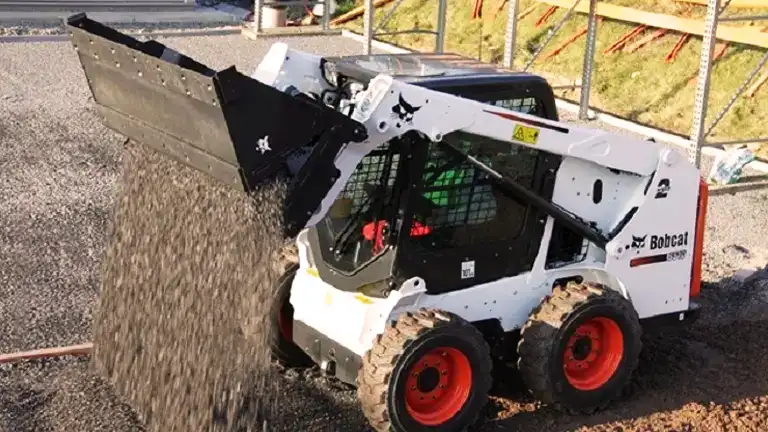
In the world of construction, landscaping, and agriculture, a small skid steer can be a game-changer. Choosing the right one, however, demands a direct and focused approach. This guide is your swift roadmap to ensure you make a smart choice, tailor-made for your specific needs.
Determine Your Application
The first step in selecting the ideal small skid steer is to pinpoint the primary application. Are you involved in construction, landscaping, agriculture, or another industry? Different tasks require different attachments and specifications, so understanding your specific needs is paramount. Skid steers come in various sizes and configurations to accommodate a wide range of applications.
Size Matters
Small skid steers come in various sizes, from compact to mid-sized models. The choice of size depends on your work environment and the tasks you need to perform. Compact models are nimble and can navigate tight spaces, making them perfect for landscaping and indoor construction. Mid-sized skid steers offer more power and capacity for heavier-duty tasks like excavation and grading.
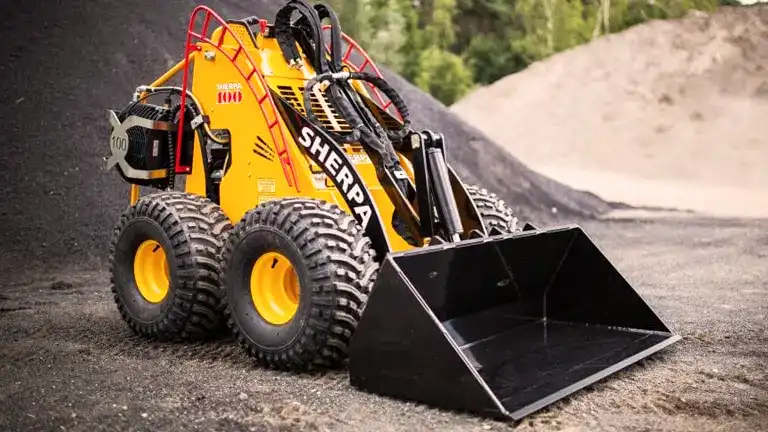
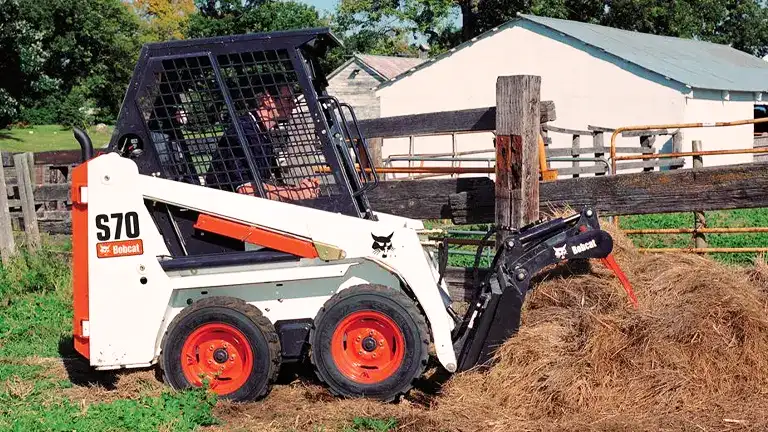
Power Source
Skid steers are typically powered by either diesel or gasoline engines, and some models offer electric power options. The choice of power source depends on factors like emissions regulations and operating costs. Diesel engines are renowned for their torque and fuel efficiency, making them ideal for heavy-duty applications. Gasoline engines, on the other hand, are easier to maintain and often more cost-effective for lighter tasks.
Attachments and Versatility
One of the most remarkable features of skid steers is their ability to accommodate a wide variety of attachments, turning them into multi-purpose workhorses. Before making your decision, consider the availability of attachments for your chosen skid steer. Common attachments include buckets, forks, augers, grapples, and more. Ensure that the skid steer you select can accommodate the tools necessary for your projects.
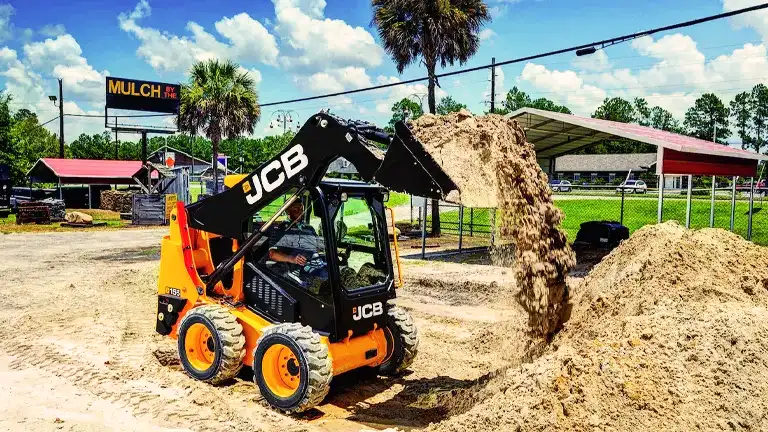
Operating Controls
Skid steers come with different control systems, such as traditional hand and foot controls or joystick controls. Choosing the right control system is a matter of personal preference, operator experience, and the specific tasks at hand. Some operators find joystick controls more intuitive, while others prefer the traditional approach. Test different control options to determine which suits you best.
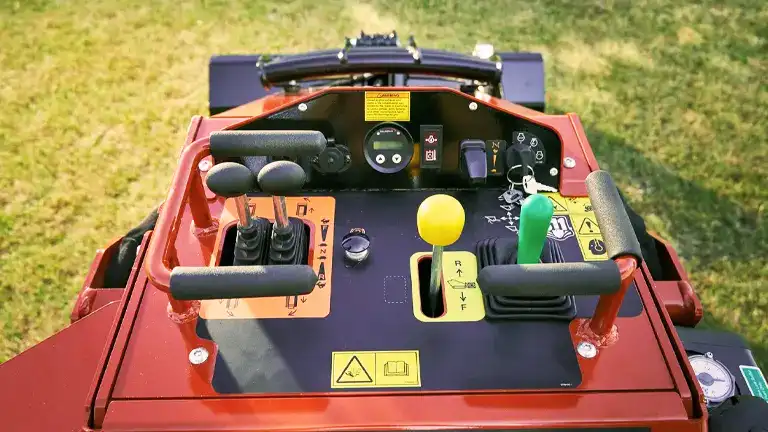
Comfort and Safety
Operator comfort and safety are essential aspects when choosing a small skid steer. Look for features like air-conditioned cabs, ergonomic seats, and easy-to-reach controls. Safety features, such as rollover protection structures (ROPS) and falling object protection systems (FOPS), are vital to protect the operator during operation.
Maintenance and Service
Regular maintenance is key to ensuring the longevity and reliability of your small skid steer. Consider the availability of service centers and replacement parts for the brand and model you choose. Some manufacturers offer user-friendly maintenance access, which can save both time and money in the long run.
Tips for Using a Small Skid Steer Safely and Effectively
- Training and Certification: Before operating a small skid steer, ensure that operators are adequately trained and certified. Familiarity with the controls, safety features, and proper operating procedures is crucial.
- Pre-Operational Checks: Conduct thorough pre-operational checks before each use. Inspect the skid steer for any signs of damage, leaks, or wear. Check fluid levels, tires, and ensure all safety features are functional.
- Proper Attire: Wear appropriate personal protective equipment (PPE), including a hard hat, safety glasses, steel-toed boots, and any other gear recommended by the manufacturer.
- Secure the Work Area: Clear the work area of debris, obstacles, and personnel before operating the skid steer. Be aware of overhead obstacles such as power lines and ensure a clear path for maneuvering.
- Understand Load Capacities: Know the skid steer’s load capacities and never exceed them. Overloading can compromise stability and lead to accidents.
- Mind the Terrain: Be aware of the ground conditions. Avoid steep slopes, unstable surfaces, or areas with potential hazards. Use caution on slippery or uneven terrain.
- Proper Speed and Maneuvering: Operate the skid steer at a safe and controlled speed, especially in confined spaces. Avoid abrupt movements and be mindful of the machine’s turning radius.
- Seatbelt Use: Always wear the seatbelt while operating the skid steer. In the event of a sudden stop or tip, the seatbelt can prevent the operator from being thrown from the machine.
- Use Attachments Properly: Follow the manufacturer’s guidelines for attaching, detaching, and using various accessories. Ensure that attachments are securely fastened and compatible with the skid steer.
- Communication: Establish clear communication with ground personnel, especially when visibility is limited. Use signals or communication devices to coordinate movements and tasks.
- Regular Maintenance: Adhere to the manufacturer’s recommended maintenance schedule. Regular checks and servicing will keep the skid steer in optimal condition, reducing the risk of malfunctions.
- Emergency Procedures: Familiarize yourself with emergency procedures, including shutdown protocols and how to respond in case of accidents or malfunctions. Have emergency contact information readily available.
Budget and Financing
Last but not least, your budget plays a significant role in your choice of a small skid steer. Evaluate your financial resources and consider financing options if necessary. While it may be tempting to opt for the most powerful model, ensure that it aligns with your budget and provides a solid return on investment for your specific applications.
List Best Small Skid Steers of 2023
1. Bobcat S130
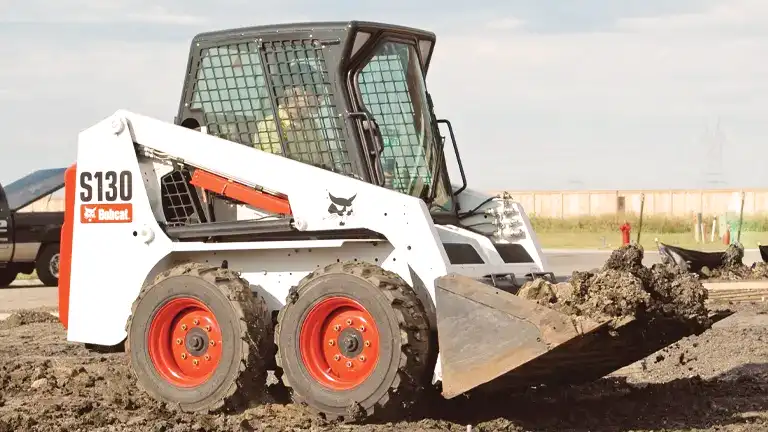
| Horsepower | 46 hp |
| Rated Operating Capacity (ISO) | 1,300 lbs. |
| Operating Weight | 5063 lbs. |
| Auxiliary Std Flow | 16.9 gal/min |
| Length | 124.1 in |
| Width | 58.7 in |
| Height | 77.3 in |
| Height to Bucket Hinge Pin | 109.5 in |
| Fuel Tank | 13.3 gal |
| Travel Speed | 7.3 mph |
Key Features
- Rated operating capacity of 1,300 pounds
- 25-horsepower Kubota V2203 diesel engine
- Lift height of 10 feet
- Compact size for easy maneuverability in tight spaces
- Ease of operation with simple controls and a comfortable cab
- Quiet operation for use in residential areas
- Durability built to withstand heavy use
The Bobcat S130 is a compact skid steer with a rated operating capacity of 1,300 pounds. It is powered by a 25-horsepower engine and has a lift height of 10 feet. The S130 is known for its maneuverability and ease of operation. It is also a relatively quiet machine, making it ideal for use in residential areas.
Pros
- Compact and maneuverable
- Easy to operate
- Quiet operation
- Durable
- Versatile
Cons
- Lower rated operating capacity
- Less powerful engine
- Relatively high price tag
2. Caterpillar 226D3
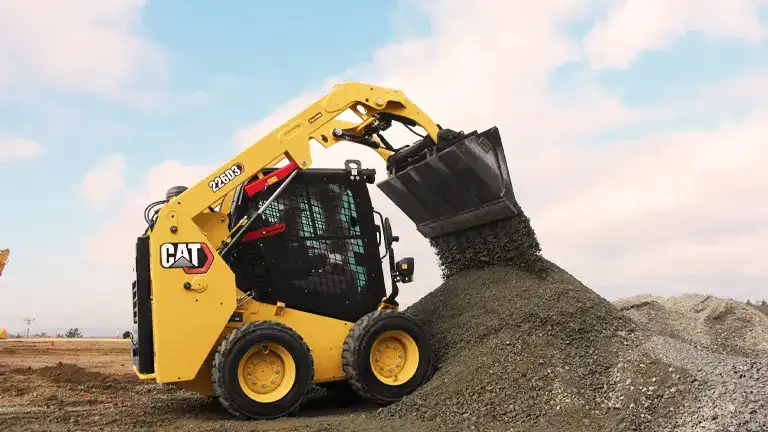
| Gross Power – Sae J1995 | 67.1 HP |
| Rated Operating Capacity | 1550 lbs. |
| Operating Weight | 5849 lbs. |
| Wheel Base | 41.5 in |
| Maximum Overall Height | 143.8 in |
| Maximum Reach – With Arms Parallel to Ground | 50.7 in |
| Maximum Dump Angle | 46.7° |
| Ground Clearance | 6.9 in |
| Hydraulic Flow – Standard – Loader Hydraulic Pressure | 3336 psi |
| Travel Speed – Forward or Reverse – One Speed | 7.6 mile/h |
Key Features
- 67.1 horsepower Tier 4 Final engine
- Radial lift design
- High-flow hydraulic system
- Comfortable and spacious cab
- Easy maintenance
The Caterpillar 226D3 is a skid steer loader. Skid steer loaders are versatile machines that can be used for a variety of tasks, such as loading and unloading materials, digging, grading, and backfilling. The 226D3 is a medium-sized skid steer loader, with a rated operating capacity of 1,550 pounds. It is powered by a 67.1 horsepower Tier 4 Final engine.
The 226D3 features a radial lift design, which provides excellent mid-lift reach and digging performance. It also has a high-flow hydraulic system that provides plenty of power for even the most demanding tasks. The 226D3 is available in a variety of configurations, including with different lift arms, buckets, and attachments.
Pros
- Powerful engine
- Large rated operating capacity (ROC)
- Smart Attachment technology
- Return-to-Dig and Work Tool Positioner
- Comfortable and spacious cab
- Cat Performance Series bucket
- Electronic pilot controls
- Cat Intelligent Leveling System (i-LEVEL)
- Cat Command for Loading
Cons
- Can be expensive
- Some operators have reported problems with the cab air conditioning system
- The Cat i-LEVEL system can be complex to use
3. Caterpillar 216B3
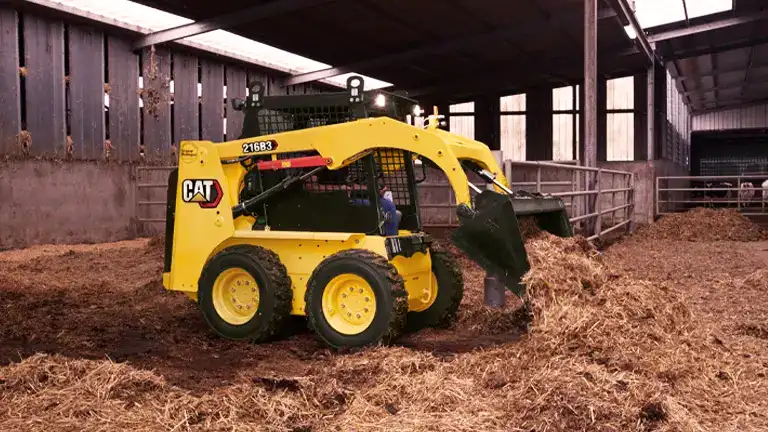
| Displacement | 2.2 l |
| Gross Power – SAE J1995 | 38 kW |
| Rated Operating Capacity | 635 kg (1400 pounds) |
| Maximum Overall Height | 3709 mm |
| Operating Weight | 2581 kg |
| Maximum Dump Angle | 40° |
| Wheel Base | 986 mm |
| Fuel Tank | 58 l |
| Hydraulic Flow – Standard – Loader Hydraulic Flow | 61 l/min |
| Rack Back Angle – Maximum Height | 81° |
Key Features
- Ergonomic operator station
- High-performance power train
- Advanced hydraulic system
- Easy maintenance
- Cat work tools
The Caterpillar 216B3 is a popular choice for skid steer loaders because it is reliable, durable, and powerful. It is powered by a 51 horsepower engine and has a rated operating capacity of 1,400 pounds. The 216B3 is also equipped with a variety of features that make it easy to operate and maintain, such as an ergonomic operator station, a high-performance power train, an advanced hydraulic system, and easy maintenance.
Pros
- Powerful Tier 4 Final engine
- Radial lift design for excellent mid-lift reach and digging performance
- High-flow hydraulic system for plenty of power
- Comfortable and spacious cab with excellent visibility
- Easy maintenance
- Wide range of options and attachments available
Cons
- Can be expensive to purchase and maintain
- Can be difficult to operate for inexperienced users
- Not as fuel-efficient as some other skid steer loaders
4. John Deere 312GR
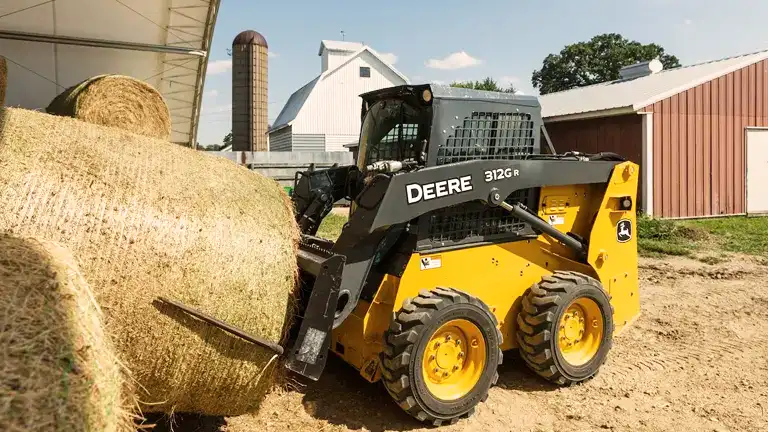
| Rated Operating Capacity | 704 kg (1,550 lb.) |
| Gross Horsepower | 37.8 kW (51 hp) |
| Net Horsepower | 35.8 kW (48 hp) |
| Operating Weight | 2680 kg (5,905 lb.) |
| Overall Height | 1960 mm(77.2 in) |
| Fuel Tank | 71 L |
| Speed – Maximum, kph (mph) | 10.8 (6.7) |
| Hydraulic Power, kW (hp) | 21.816 (29.2) |
| Width – No Bucket, mm (inches) | 1600 (62.9) |
| Rated Engine Speed, rpm | 2600 |
Key Features
- Powerful engine
- High lift capacity
- Compact design
- Comfortable operator station
- Easy maintenance
The John Deere 312GR is a small-frame skid steer loader that is designed for a variety of applications, including construction, landscaping, and agriculture. It is known for its durability, power, and performance. The 312GR has a radial-lift boom that provides more reach at mid-range lift heights, making it ideal for digging, grading, and backfilling. It is also equipped with a powerful engine and hydraulic system that can handle even the most demanding tasks.
Pros
- Powerful engine
- Large lift capacity
- Compact design
- Comfortable operator’s station
- Reliable performance
Cons
- Expensive
- Complex operation
- Limited visibility
- Safety concerns
5. Bobcat S590 Skid Steer

| Horsepower | 68 hp |
| Rated Operating Capacity (ISO) | 2,000 lbs. |
| Operating Weight | 6765 lbs. |
| Travel Speed | 7 mph |
| Fuel Tank | 24.8 gal |
| Length | 133 in |
| Width | 65.2 in |
| Height | 77.8 in |
| Reach @ Maximum Height | 32.6 in |
| Turning Radius | 79.7 in |
Key Features
- 68 hp (50.7 kW) turbocharged and intercooled Bobcat engine
- Vertical lift path
- Rated operating capacity of 2,000 lbs
- Selectable joystick controls
- High-flow auxiliary hydraulics
- 7-pin attachment control
- 2-speed travel
The Bobcat S590 Skid Steer Loader is the highest-lifting, most powerful model in the popular 500 frame size. It is powered by a 68 hp (50.7 kW) turbocharged and intercooled Bobcat engine, which provides plenty of power for even the most demanding tasks. The S590 also features a vertical lift path, which gives you more reach at full lift height than a radius lift path, without sacrificing performance.
Pros
- Powerful engine
- High-lift capacity
- Durable construction
- Tight turning radius
- Comfortable operator controls
Cons
- Fuel-inefficient
- Expensive
- Limited visibility
- Can be difficult to maneuver in tight spaces
Conclusion
Choosing a small skid steer is a decision that should be made with careful consideration. By understanding your application, selecting the right size, power source, attachments, controls, and prioritizing safety and comfort, you can find the perfect machine for your needs. With proper maintenance and budgetary planning, your small skid steer can become an invaluable asset for years to come. So, take your time, do your research, and choose the small skid steer that will help you accomplish your projects with ease and efficiency.
Frequently Asked Questions (FAQs)
- What factors should I consider when selecting skid steer attachments?
The versatility of a skid steer often comes from its ability to use various attachments. Consider the types of tasks you’ll be performing and choose attachments accordingly. Common attachments include buckets, forks, augers, and brush cutters. Check compatibility and ease of attachment change to optimize your skid steer’s functionality. - How does the skid steer’s auxiliary hydraulic system impact performance?
The auxiliary hydraulic system powers attachments, and its performance is crucial. Check the hydraulic flow rate and pressure specifications to ensure compatibility with the attachments you plan to use. A higher hydraulic flow rate can provide better performance for demanding tasks. - What safety features should I prioritize in a small skid steer?
Safety is paramount in any construction or landscaping equipment. Look for features like operator restraint systems, safety interlock systems, and visibility enhancements. Some skid steers come with advanced safety technologies, such as backup cameras and proximity sensors, which can help prevent accidents. - How does the size of the skid steer affect maneuverability in tight spaces?
The size of the skid steer plays a crucial role in its maneuverability. Smaller skid steers are more agile and suitable for tight spaces, while larger ones may have greater lift capacities but could be less maneuverable. Consider the dimensions of the skid steer in relation to your work environment to ensure optimal maneuverability. - What are the maintenance requirements for a small skid steer, and can I perform basic maintenance tasks myself?
Regular maintenance is essential for the longevity and performance of a skid steer. Check the manufacturer’s recommendations for maintenance intervals and procedures. Some skid steers are designed for easy maintenance, with accessible components and user-friendly features. Determine if you can handle basic maintenance tasks or if professional assistance is necessary.
In wrapping up our ultimate guide on choosing a small skid steer, we trust you now possess the knowledge to make a well-informed decision. From attachment considerations to hydraulic system performance, safety features, maneuverability, and maintenance requirements, we’ve covered the key aspects crucial to finding the right skid steer for your specific needs. Whether you’re involved in construction, landscaping, or agriculture, a carefully chosen skid steer can significantly boost your efficiency. Take the time to assess your requirements, explore reputable brands, and learn from user experiences through reviews. Here’s to discovering the perfect small skid steer that not only meets your needs but also enhances the success of your projects. Happy operating!

Benjamin Brooks
Forestry AuthorGreetings! I'm Benjamin Brooks, and my journey over the past 15 years has revolved around the fascinating realms of content creation, expertise in snow clearing, and the intricate world of lumberjacking and landscaping. What began as a simple curiosity about the natural world and heavy machinery has evolved into a passionate profession where my love for crafting words intertwines seamlessly with my lumberjacking and garden skills.


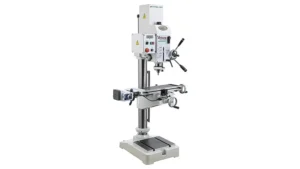
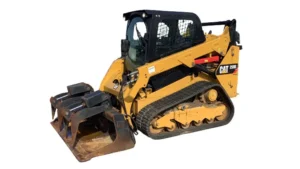
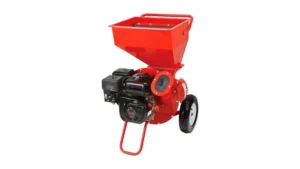

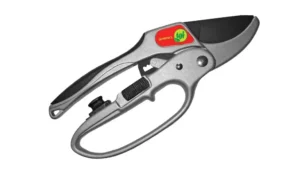
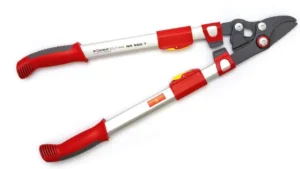
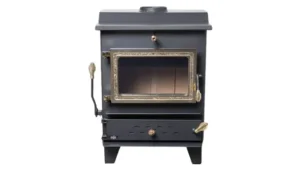
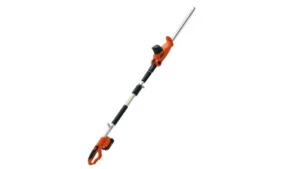

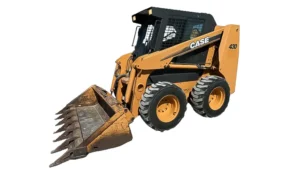
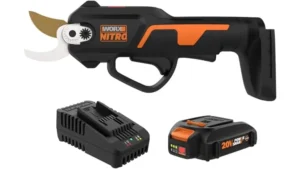
Leave your comment